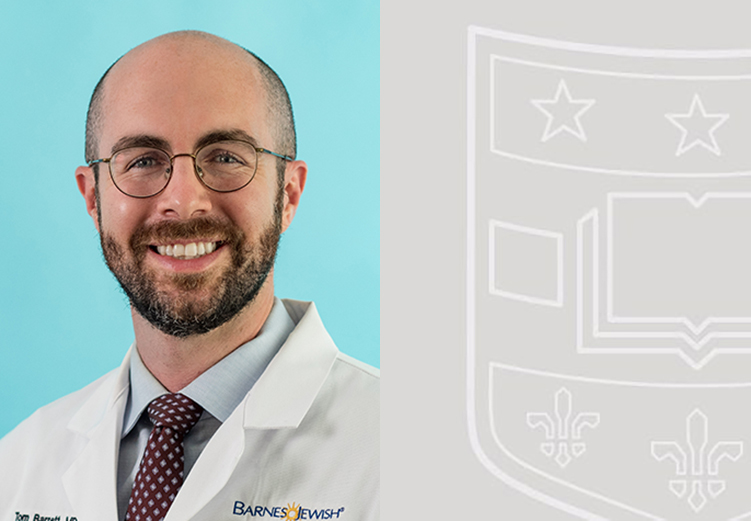In a first-of-its-kind study, two Washington University residents – Tom Barrett, MD (Otolaryngology), and Bhuvic Patel, MD (Neurosurgery) – employed two novel single cell genomic techniques to reveal an injury-like process related to the growth of vestibular schwannomas (VS).
The study, accepted for publication in the journal Nature Communications, is the first to examine the VS tumor microenvironment using these approaches. Knowledge of the factors that control tumor growth might provide novel targets for potential therapeutic intervention.
Vestibular schwannomas are benign tumors that arise from Schwann cells, the cells responsible for forming the insulation around nerve processes of the vestibulocochlear nerve. The incidence of these tumors may be as high as 1 in 500 adults, and they comprise 8% of all primary intracranial tumors.

VS tumors or treatment strategies such as surgical removal can be associated with a number of debilitating deficits, including a loss of hearing and balance and facial palsy. But, in spite of their common occurrence, very little is known about the molecular signals that drive the pathogenesis or development of this disease.
The current studies used single-cell RNA sequencing to characterize the different cellular populations of VS tumors and better understand their individual differences or genetic heterogeneity. They also used a single cell epigenetic profiling technique to better understand each cell’s role in tumor development. The study is the first attempt to describe the tumor microenvironment using these techniques.
Key among the findings of the study were the identification of two phenotypes or outward expression of VS tumors. One phenotype was characterized by the presence of repair-like Schwann cells typically seen in the setting of nerve injury. A large infiltrate of inflammatory cells was also characteristic of this phenotype.
Digital cytology deconvolution – a specialized technique for re-analyzing data from previous studies – showed the VS tumors of the injury-like phenotype to be larger in size compared to the other type. They were also shown to express CSF1, a gene product that regulates the development and function of the inflammatory cells found in this type of VS tumor.
The group then used a cell-line model of repair-like Schwann cells to show these cells can actively recruit inflammatory cells, and that blocking the CSF1 pathway could dramatically reduce this recruitment. Together, these findings suggest new avenues of investigation to identify biomarkers of tumor growth and novel pathways for therapeutic intervention that might inhibit tumor progression.
According to Barrett, the study was a true team effort that was only possible through close collaboration between the laboratories of head and neck surgeon Sid Puram, MD, PhD, and neurosurgeon Albert Kim, MD, PhD.
“I hope this work lays the foundation for continued efforts between our two departments to better understand this disease and ultimately improve the care of our shared patients,” he said.
The study will appear in print in early 2024. A pre-print version of the article can be seen here.
